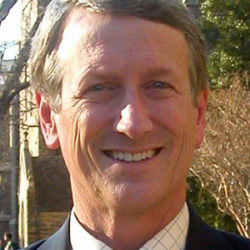One year after a highly successful and thought-provoking conference in Paris on Capitalism in Crisis, SASE turns its attention to an issue underpinning current debates on our global economy and society. This year, the annual meeting will focus on emerging forms of transnational governance – public, private, and hybrid – in the global economy, examining its development, dynamics, impact, and implications.
In Philadelphia: Eric Helleiner takes on money and global governance; Donald MacKenzie examines financial models, economic agents, and markets; Saskia Sassen looks at global cities…
Theme
It is a commonplace that despite growing economic globalization there is no global government. Yet it is scarcely less common to observe that the global economy does not operate under conditions of anarchy or through arm’s-length market exchange alone. Not only is most cross-border trade, investment, and production coordinated through multinational corporations and inter-firm supply chains, but these activities themselves are subject to an increasingly dense—if far from complete or coherent—web of transnational rules, norms, and standards. These rules in turn are produced, contested, and enforced by varying combinations of public and private actors, including not only national states, whose own regulatory authority they circumscribe, but also international organizations, regional blocs, trade and professional associations, multinational firms, expert bodies, NGOs, and advocacy networks.
This year’s conference focuses on the development, dynamics, impact, and implications of emerging forms of transnational governance in the global economy – public, private, and hybrid. Thus we welcome contributions on topics such as the organization of multinational corporations, professional service firms, global supply chains, and financial and commodity markets; the operation of rule-making and standard-setting bodies like the WTO, the European Union, the International Accounting Standards Board, and private rating agencies; “civil regulation” of labor and environmental standards through corporate codes of conduct and certification schemes; and the role of business and/or civil society actors in transnational rule making. Participants might equally choose to examine themes such as the interplay between governance processes at different levels (transnational, regional, national, subnational), the impact of transnational regulation on national institutions and policies in developed and developing countries, its influence on the strategies of different types of actors, and its consequences for the distribution of power and resources.
Finally, we invite contributors to consider the explanatory and evaluative challenges raised by the current development of transnational governance. How far, for example, can this be explained in terms of the Polanyian “double movement” of disembedding and re-embedding of markets in society, still perhaps the most widespread paradigm in Socio-Economics? What alternative theoretical frameworks are available? How should we evaluate transnational governance arrangements, individually and in the aggregate? Are they effective, accountable, legitimate, and sustainable? Are they, or could they become, democratic?
Program co-chairs
Local Organizer
Online program is available here.
Presidential Address. Pragmatic Transnationalism: Governance across Borders in the Global Economy
Jonathan Zeitlin (University of Amsterdam)
Presidential Address presented to the annual meeting of the Society for the Advancement of Socio-Economics (SASE), Temple University, Philadelphia, June 24-26, 2010
As the call for papers for this year’s conference remarks, it is a commonplace that despite the advance of economic globalization there is no global government. Yet it is scarcely less common to observe that the global economy does not operate under conditions of anarchy nor through arms-length market exchange alone. Most cross-border trade, investment, and production is coordinated through multinational corporations and inter-firm supply chains. And these activities themselves are subject to an increasingly dense – if far from complete or coherent – web of transnational rules, standards, and norms. These rules in turn are generated, contested, and putatively enforced by varying combinations of public and private actors. Such actors include not only national states, whose own regulatory authority they circumscribe, but also international organizations, NGOs, firms and business associations, among others.
But how, if at all, do these plural, fragmented processes of transnational economic coordination and regulation fit together? Can they be harnessed to serve social objectives such as public health and safety or environmental protection? And can they respond to – if not fully reconcile – the diverse interests and perspectives of multiple stakeholder groups from both developed and developing countries?
What I want to argue in this address is that one promising answer to these questions lies in linking together emergent forms of economic coordination within and between firms with parallel developments in public rule-making, as is already occurring in many policy domains. These organizational forms, which we may jointly call “pragmatic” or “experimentalist” governance, share a set of common design principles, considered in abstract terms that will become progressively more concrete as the analysis proceeds.
1. Pragmatic/Experimentalist Governance
At the core of these new forms is a recursive process of provisional goal-setting and revision through feedback from experience of pursuing them in different contexts. Sub-units within and beyond the organization are given substantial responsibility for defining the best ways to achieve these goals, separately and in conjunction with one another. They are also responsible for monitoring their own operations to find and fix gaps in the ensuing plans as they occur. Their results are then compared against one another, to identify and diffuse opportunities for performance improvement. Finally the goals themselves are periodically revised in response to the problems and possibilities revealed by such reviews. Monitoring thus becomes a crucial source of learning, at the same time as a mechanism for ensuring mutual accountability between collaborating units, as Charles Sabel has emphasized in a series of seminal essays which I draw upon freely here, as well as on our joint work.
These new forms of coordination and governance may be considered pragmatic or experimentalist in the sense that they systematically provoke doubt about their own assumptions and practices; they treat all solutions as incomplete and corrigible; and they produce an ongoing, reciprocal readjustment of ends and means through learning from disciplined comparison of local efforts to advance general goals.
The proliferation of these organizational forms across different sectoral and institutional settings can best be understood as a widespread response to a secular increase of environmental volatility and complexity in the global economy over the past three decades. The strategic uncertainty resulting from these developments has overwhelmed in many settings the capacities of conventional hierarchical management and principal-agent governance. The foundation of principal-agent governance is monitoring of conformity by subordinate agents to fixed rules and detailed instructions, incentivized through positive and negative sanctions. In a world where “principals” are uncertain of what precisely their goals should be and how best to achieve them, they must be prepared to learn from the problem-solving activities of their “agents”. Hence the former can no longer hold the latter reliably accountable by comparing their performance against predetermined rules, since the more successful the agents are in developing new solutions, the more the rules themselves will change.
In firms and supply chains, these new forms of coordination are based on iterated co-design of products and production processes between collaborating units. In such iterated co-design, complex wholes are provisionally parsed into parts, whose subsequent development then suggests modifications of the overall design, which are then parsed again, and so on. Thus new design goals are established through benchmarking of existing products and processes against current and potential rivals. Provisional designs are developed and refined through simultaneous engineering of component subsystems separately and in relation to one another. And disruptions in production operations are used to trigger searches for hitherto unnoticed weaknesses in product or process design through root-cause systems of error detection and correction. These “new pragmatic disciplines” make tacit knowledge partially explicit and produce rich flows of information. These in turn enable the collaborating units to monitor one other’s activities closely enough to assess their ongoing reliability and capabilities in comparison to other actual and potential partners, without constituting a full-blown system of joint governance.
Empirical studies, including ongoing research by Gary Herrigel and myself, show that in industries as diverse as motor vehicles, industrial machinery, computers, medical devices, and agri-foods, these pragmatic disciplines have led to significant upgrading of the capabilities of small and medium-sized supplier firms in both developed and developing economies. Crucial mechanisms in this process are certification, evaluation, and review systems. These systems assess suppliers’ initial capacity to participate in continuous improvement of products and processes, benchmark their performance against internal and external comparators, and provide diagnostic feedback and advice on areas where improvement is needed to meet customers’ quality, design, and delivery standards. They do not in themselves resolve all problems within inter-firm supply chains, including persistent deficiencies in supplier skills and opportunistic or inconsistent behavior by customers, for which higher-level pragmatic governance mechanisms, both public and associational, may be required. But where suppliers are able to take advantage of such “training by monitoring”, they typically progress to more demanding and rewarding work with existing customers, while enhancing their capacity to win new clients and exit unsatisfactory relationships.
In public rule-making, pragmatic governance in its most developed form involves a multi-level experimentalist architecture. Such a governance architecture comprises four interdependent elements, organized as an iterative cycle. First, framework goals (such as safe food, sustainable forests, an “adequate education”, or “reasonable accommodation” for people with disabilities) and metrics for assessing their achievement are provisionally established by some combination of “central” and “local” units, in consultation with relevant outside stakeholders. Second, local units are then given broad discretion to pursue these goals in their own way. But, third, as a condition of this autonomy, these units must report regularly on their performance and participate in a peer review in which their results are compared with those employing other means to the same general ends. Fourth and finally, the goals, metrics, and decision-making procedures themselves are periodically revised by a widening circle of participating actors in response to the results of the review process. Accountability in this system does not entail compliance with a predetermined rule, as in principal-agent governance, but instead providing a good explanation for choosing one way of advancing a common project, in comparison with alternatives pursued by other similarly placed units, and proposing consequent measures for self-correction and improvement.
Experimentalist governance architectures of this type have become pervasively institutionalized in the European Union across a broad array of policy domains, from regulation of energy, financial services, and competition through food and drug safety, data privacy, and environmental protection, to justice and internal security, anti-discrimination, and fundamental rights. They take a variety of organizational forms, including councils of national regulators, networked agencies, open methods of coordination, and operational cooperation among front-line officials, often in combination with one another. Contrary to a widespread misimpression, this experimentalist architecture is not confined to fields where the EU has weak competences and produces mainly non-binding guidelines, action plans, scoreboards, recommendations, and the like. Instead, it is well developed in domains where the Union has extensive legislative powers, and regularly results in the elaboration of revisable standards mandated by law and new principles which may eventually be given binding force. Governance architectures with similar properties are also widespread in the United States, both in the reform of public services like education and child welfare, and in the regulation of public health and safety risks, such as nuclear power, food processing, and environmental pollution.
Experimentalist regulation of private economic activity often seeks to work through public oversight of firms’ own pragmatic governance processes or to induce their development where they do not already exist. Such an approach responds to the widely acknowledged failures of “command-and-control” regulation in a turbulent, fast-moving world. In such a world, fixed rules written by a hierarchical authority become obsolete too fast to be effectively enforced on the ground, and the resulting gap between rules and practice is bridged by an unaccountable proliferation of discretionary waivers and exceptions. The alternative approach is to build on and monitor firms’ own error detection and correction mechanisms by requiring them to develop systematic, verifiable plans for identifying and mitigating possible hazards in their operations in light of available knowledge about safety failures in similar settings. Regulators then review the adequacy of these plans, monitor their implementation, benchmark the results against those of other firms in the same domain, and raise the standard for all concerned by feeding back information on new threats gathered from analysis of dangerous events and near misses. Increasingly, too, such prudential regulation extends beyond processes within individual firms to require full traceability of products throughout the supply chain. A well-documented example, to which I will return shortly, is Hazard Analysis of Critical Control Points (HACCPs) in food safety.
2. Extending Experimentalism Transnationally
If strategic uncertainty is one possibility condition for experimentalist governance, then a second is a polyarchic or multi-polar distribution of power, where no single actor has the capacity to impose her own preferred solution without taking into account the views of others. Experimentalist governance thus appears particularly well-suited to transnational domains, where there is even in theory no overarching sovereign with the authority to set common goals, and where the diversity of local conditions and practices makes the adoption and enforcement of uniform fixed rules even less feasible than in domestic settings.
Yet the very polyarchy and diversity that make experimentalist governance attractive under such conditions can also make it difficult to get a transnational regime off the ground. Thus too many participants with sharply different perspectives may make it hard to reach initial agreement on common framework goals. Conversely, a single powerful player may be able to veto other proposed solutions even if he cannot impose his own.
One possible way forward, though by no means the only one, may be for a single jurisdiction to extend experimentalism beyond its own borders, for example through unilateral regulation of transnational supply chains as a condition of market access. Such measures could also help to enhance the effectiveness of “private” or “civil” regulatory standard-setting schemes organized by businesses and NGOs, which have proliferated in many sectors to fill gaps in transnational governance. An obvious danger, however, is that this unilateral extension will produce resentment and resistance by regulatory addressees in other countries, unless they are given a voice in shaping the standards they are expected to meet. Such one-sided extension may also denature experimentalism itself by cutting out the feedback loop between local learning from rule application to the revision of the rules themselves. Hence some further destabilization mechanism may be required to unblock this impasse by opening up such unilateral regulatory initiatives to joint governance by affected parties in other countries.
Here the disciplines of the world trading system may prove surprisingly helpful. Thus WTO rules permit member states to restrict imports in order to protect public health and safety and the environment. But as interpreted by the WTO Appellate Body, these rules also require states wishing to restrict imports on these grounds to ensure that their proposed measures are non-discriminatory and proportional to the intended goals, take account of relevant international standards, and consult with their trading partners to minimize the impact on affected third parties. These disciplines, when they permit such extensions at all, can thus provide a potential mechanism for transforming unilateral regulatory initiatives by developed country jurisdictions such as the EU and the US into a joint governance system with stakeholders from the developing world, if not a fully multilateral experimentalist regime. This role for the WTO points towards the operation of a more general mechanism, whereby the rules of existing multilateral institutions, though not experimentalist themselves, can nonetheless push unilateral extensions of experimentalism in a more reciprocal direction.
3. Pragmatic Transnationalism in Action
In the second half of this address, I will examine how these mechanisms might interact to produce such a form of pragmatic transnationalism by analyzing empirical developments in two prominent fields of global economic governance: food safety and sustainable forestry.
A. Food Safety
In food safety, elements of a global experimentalist regime have emerged from a patchwork of interactions between national regulations, international organizations, transnational supply chains, and voluntary private standards. The key development here is the worldwide diffusion of Hazard Analysis of Critical Control Points (HACCP) systems for ensuring food safety in place of historic command-and-control methods based on periodic “poke-and-sniff” inspections of finished products for compliance with minimum health standards. HACCP, by contrast, is a process-based approach, whereby food firms are required to analyze their entire production chain for potential hazards; identify critical points where contamination may arise; develop a testable plan for controlling and reducing such hazards; monitor the implementation of this plan, verify the results, and take remedial action to correct any performance shortfall. Public authorities then review the adequacy of these hazard reduction plans and verification procedures. They may then require their revision to meet rising health and safety standards established by the practices of the best performing firms, although the precise regulatory arrangements vary widely across jurisdictions.
HACCP systems originated in the US space program during the 1960s and were first incorporated into federal food safety regulations in the early 1970s. After many years of development by private firms, trade associations, scientific and professional bodies, national governments, and international organizations, guidelines based on HACCP principles were adopted as international standards for food safety in 1992 by the Codex Alimentarius Commission, a joint venture of the UN’s Food and Agriculture and World Health Organizations. These guidelines in turn acquired quasi-legal force in global trade as a result of the Sanitary and Phytosanitary (SPS) Agreement attached to the 1994 treaty establishing the WTO, which recognized the Codex Commission as an authoritative source of international food safety standards. National restrictions on imported food products are thus exempt from challenge under WTO rules if they are based on Codex standards; countries wishing to deviate upwards from these standards in order to achieve higher levels of safety are free to do so, but only on the basis of a scientific risk assessment.
Since the mid-1990s, the US Food and Drug Administration and Department of Agriculture have introduced mandatory HACCP-based systems for regulating food safety across a growing number of product areas, as have most other industrialized countries. In Europe, a key impetus to private adoption came from the 1990 UK Food Law, which subjects food producers and distributors to strict legal liability for exercising “due diligence” to ensure the safety of their products, but allowed the implementation of HACCP systems to serve as a mitigating defense. Subsequent EU legislation prohibits firms from placing unsafe food on the market, requires full process traceability of products “from farm to fork”, and mandates the use of HACCP-based systems for achieving these objectives, under the supervision of national authorities. Neither Codex nor EU regulations set out the specific features a HACCP system must have, but instead leave it to member states to define their own variants, with guidance from the Commission and a networked European Food Safety Authority (EFSA). It then falls to firms or groups of firms to adapt these regulatory standards to their own production processes.
EU food safety regulations have extraterritorial reach, insofar as they apply to imported as well as domestically produced goods. As in many other sectors, the EU requires countries exporting food into the European market to demonstrate the equivalence of their domestic regulatory systems. The European Food and Veterinary Office reviews the effectiveness of foreign enforcement arrangements, and proposes recommendations for improvements, along with penalties for non-compliance. Exporting countries are also strongly encouraged to participate in EFSA’s Rapid Alert System for Food and Feed, which pools information on actual and potential public health threats, and identifies areas for necessary revisions in both EU framework rules and national safety practices. Both the EU and the Codex Trust Fund provide capacity-building technical assistance to governments and producers in developing countries to help them meet global food safety standards, with particular emphasis on the implementation of HACCP systems.
The increasing stringency of public food safety regulation, with its requirements for process traceability and hazard mitigation systems, have proved a powerful spur to the growth of private standard-setting and certification schemes for their implementation. Many of these schemes take a collective form, in order to reduce the costs and increase the effectiveness of standard development, application, and verification along the supply chain. They are typically led by large northern food retailers and manufacturers, who are also motivated by concerns for sustaining consumer confidence in the industry and their own brand reputation. Their standards often go beyond compliance with current regulatory requirements, both in the performance levels specified and the range of issues covered. While most of these schemes are national in origin, some have become international in scope, and a Global Food Safety Initiative has been established to benchmark their standards against one another. Seven major global food retailers have now agreed to accept four of these standards and their constituent HACCP systems as mutually equivalent based on this benchmarking exercise.
A striking case in point is that of GlobalGAP, analyzed in a recent report for the Codex Commission by Spencer Henson and John Humphrey. This organization focuses on the development of pre-farm-gate process standards for fresh produce, based on a broad definition of “good agricultural practice” (GAP), which includes labor and environmental components, as well as HACCP systems aimed particularly at ensuring compliance with EU-mandated levels of maximum pesticide residue. EUREPGAP began as an alliance of large European retailers, but now has global membership as its change of name indicates. The organization has also opened up governance of its standard-setting process to participation by other stakeholders, including food producers and suppliers from developing countries. Henson and Humphrey argue that “the interests of developing countries…are heard more loudly in GlobalGAP than in Codex”, which is dominated by developed country governments and their national food industries. A key reason is this private body’s greater perceived need to build up the public legitimacy of its standards. GlobalGAP standards are regularly updated to take account of regulatory changes and feedback from national implementing bodies, including in developing countries. These national schemes are in turn benchmarked against each other for equivalence, thereby enhancing both their incorporation of global practices and adaptability to local conditions.
Despite the proliferation of competing HACCP systems, something like a transnational experimentalist regime thus seems to be emerging from the nesting of public and private food safety standards at different levels of governance from the global to the local, and their benchmarking against one another for equivalence. This process is only likely to widen in the coming years, as the US seeks to extend its own approach to HACCP regulation to cover imported products, including from the EU, while both European and American regulators engage with China’s stumbling steps to build a functioning food safety system.
B. Sustainable Forestry/Illegal Logging
The second case I want to examine is that of sustainable forestry and the fight against illegal logging, one of the most widely studied fields of transnational governance. The big news here over the past two decades has been the development and diffusion of private forest certification schemes organized by NGOs and business associations. These schemes emerged during the 1990s in response to the failure of previous efforts to tackle the problems of global forest deterioration through the negotiation of an international convention and unilateral fixing of environmental standards for imported timber products by northern governments. Thus intergovernmental attempts to agree a binding global forestry convention at the 1992 Rio Earth Summit foundered on opposition by developing countries to potential infringements on their sovereignty, fears of disguised protectionism, and the absence of northern funding support. The Austrian government was likewise obliged to withdraw a law banning import of unsustainably harvested tropical wood products in the face of complaints by developing countries to the WTO’s predecessor, the General Agreement on Tariffs and Trade (GATT).
To fill the resulting governance gap, a transnational coalition led by environmental NGOs created the Forest Stewardship Council (FSC) to develop private standards for sustainable forestry and certify their application. The FSC was explicitly designed as a multi-stakeholder organization, with standards and procedures determined through deliberation and supermajority voting by three equal chambers of environmental, social, and business interests, with balanced representation of northern and southern members. The FSCs principles include respect for labor and indigenous people’s rights, as well as biodiversity, ecological sustainability, and environmental management requirements. These principles are elaborated through more specific global standards, which are adapted to local conditions by national or regional chapters. FSC-certified forests must have a continuously updated management plan, and monitor its implementation, with periodic verification by an accredited third-party auditor. The auditors’ reports are published on the web, and regularly request specific actions to correct deficiencies as a condition of continued certification. FSC wood must also be accompanied by separate “chain-of-custody” certification to ensure its full traceability through each link in the supply chain from forest to final sale.
The FSC expanded rapidly on the back of activist campaigns aimed at pressuring forestry firms and landowners to certify their operations in order to ward off damaging public attacks and boycotts, while at the same time holding out the prospect of premium sales of certified products to environmentally conscious consumers. This approach proved most effective with large end-of-chain retailers and governments, who extended the demand for certified wood to third-party suppliers and state-owned forests. It also attracted some progressive firms which were already close to compliance with FSC standards. But most forestry firms in North America and Europe chose instead to join industry-run certification schemes with no joint stakeholder governance, lower substantive standards, and weaker verification requirements. Competition between the FSC and these industry schemes has resulted in revisions on both sides, as Christine Overdevest in particular has argued. Both in North America and in Europe, industry-led certification schemes opened up their governance arrangements to a wider range of stakeholders, raised their substantive standards, and adopted mandatory third-party verification and audit disclosure procedures. The FSC in turn has modified its own standards in certain areas to make certification less costly and more practically feasible. Driving such revisions, as Overdevest shows, was a process of public comparison and benchmarking, conducted by retailers, government procurement agencies, and industry associations, which pushed the industry schemes to ratchet up their standards in order to become accepted as equivalent to those of the FSC, even if they remain some distance apart on important issues.
By the mid-2000s, private certification schemes had achieved high rates of coverage among industrial forest companies in developed economies. But their take-up by developing countries remains weak, especially in the tropical forests whose deterioration sparked the original campaign for global regulation. In response, NGOs, governments, and international organizations have focused on combating illegal logging, an endemic problem in many developing countries, which depresses prices for legally harvested wood and undercuts the adoption of sustainable forestry practices.
The most innovative such initiative is the EU’s Forest Law Enforcement Government and Trade (FLEGT) program, which grew out of a set of regional ministerial fora organized by the World Bank. FLEGT seeks to control exports of illegally logged wood by negotiating Voluntary Partnership Agreements (VPAs) with developing countries to create “legality assurance” licensing systems, based on jointly defined standards, regular monitoring and performance review, and benchmarking of alternative approaches to third-party verification. Local civil society stakeholders as well as international NGOs participate both in the definition of “legally harvested wood”, and in monitoring its certification, each of which are explicitly conceived as revisable in light of one another. The EU provides development assistance to build up the regulatory capacity of both public and private actors. Agreements with these experimentalist features have been signed with Ghana and Cameroon, and negotiations are currently underway with Indonesia, Malaysia, Vietnam, and a number of other African countries.
FLEGT VPAs are explicitly designed to be WTO compliant because the import standards they impose are negotiated with developing countries themselves and implemented through local certification, monitoring, and verification. But the effectiveness of this initiative obviously depends on individual developing countries’ willingness to sign such agreements. Hence the EU is now in the process of passing legislation that would complement FLEGT by controlling demand for illegally logged wood, while at the time reinforcing private forest certification schemes and placing them under public scrutiny.
This legislation would require all businesses placing wood products on the EU market to show “due diligence” in ensuring that they had not been illegally harvested. This can be demonstrated in three possible ways: (1) possession of an export license under a FLEGT VPA; (2) establishment of a private risk management system, with full traceability, risk assessment, and risk mitigation procedures; or (3) participation in a recognized monitoring scheme, based on independent verification of compliance with local forestry legislation. As in the case of food safety, member state authorities are charged with monitoring compliance, not by inspecting the product itself, but rather by reviewing firms’ risk management systems, and proposing corrective action where needed. The European Commission, in cooperation with national authorities, is responsible for determining that recognized monitoring bodies are maintaining effective systems of due diligence against illegal logging, including procedures for remediation of violations.
The EU’s proposed legislation is thus likely to motivate developing countries to sign FLEGT VPAs as a “green lane” into the European market. As in the case of food safety, too, the “due diligence” requirement should stimulate forestry firms and importers to join private certification schemes, while pushing these schemes to ensure that illegal logging is in fact detected and corrected by subjecting their operations to ongoing review by the European authorities. By alleviating a major source of cost pressure on legitimate timber firms, the legislation, in conjunction with FLEGT, is likely to encourage adherence by developing country producers to more ambitious standards of sustainable forestry promoted by private certification schemes like the FSC. The EU’s approach to combating illegal logging appears likely to be accepted as legitimate not only by the WTO but also by developing countries themselves, because it offers them an opportunity to participate in a jointly governed system of legality assurance, while imposing reciprocal obligations on European importers to exercise due diligence in respecting their laws.
These EU initiatives are likely to interact productively with parallel efforts to control illegal logging by other developed countries, such as Australia and the US, which lack some of their experimentalist features. In the US, for example, trade in illegally harvested wood is now subject to criminal prosecution under the Lacey Act, with harsher penalties for violators who fail to exercise “due care” in acquiring such products. FLEGT licenses, which apply to signatory countries’ entire wood exports, may serve as evidence of such “due care” in US courts. EU review of private forest certification schemes could likewise be used to enhance the effectiveness of the US enforcement system, which relies primarily on spot inspections by customs and wildlife officials, often based on tipoffs from competing firms. Conversely, the European Parliament has proposed to add an “underlying offense” of handling illegal timber inspired by the Lacey Act to the draft due diligence regulation. Both the US and the EU schemes can also be expected to have a major impact on China, now the world’s largest trader in wood products, which has signed bilateral coordination agreements with each of them to reduce illegal logging and promote sustainable forestry in third countries. In forestry, as in food safety, the intersection of global supply chains, WTO rules, private standard-setting schemes, and regulatory initiatives by developed country governments seems thus to be leading towards the emergence of a pragmatic form of transnational governance, with significant experimentalist elements and growing participation by developing country stakeholders.
Conclusion
The trajectories analyzed in these cases draw attention to one broad class of mechanisms, whereby extension of experimentalist regulation along global supply chains, disciplined by the rules of the world trading system, may give impetus to the construction of a jointly-governed transnational regime involving a multiplicity of public and private actors from developed and developing countries. But this is far from the only pathway through which such pragmatic transnationalism may develop. Thus, for example, a global experimentalist regime may emerge out of reflexive learning by state and non-state actors from previous failures of multilateral institutions and agreements, as Gráinne de Búrca has shown in the case of the UN Convention on the Rights of Persons with Disabilities. This innovative instrument incorporates many experimentalist features, including broad, open-ended goals such as “reasonable accommodation” for the disabled; participation of national NGOs and human rights institutions in implementation monitoring; and annual review of its operations on the basis of comparative national data by an inclusive conference of stakeholders. These experimentalist features, as de Búrca documents, arose out of a sustained debate among participating governments and NGOs about the deficiencies of traditional international human rights treaties, based on detailed catalogues of specific obligations for states and sporadic international monitoring.
Another pathway towards transnational experimentalism may run through reforms of established private certification and monitoring schemes resulting from critical reflection on their limited effectiveness by NGOs, multinational firms, and national governments. This pathway, evidence of which can been seen in both food safety and sustainable forestry, is particularly relevant in the case of labor standards, where WTO rules and opposition from developing countries largely preclude unilateral regulatory initiatives by northern governments. The key here, as recent research by Richard Locke and others suggests, is closer integration of monitoring labor conditions with pragmatic learning about how to improve them through root-cause problem-solving, diagnostic review, and performance comparison at multiple levels within and across firms. Associations and public institutions in developing economies also have a role to play in supporting upgrading of supplier capabilities, setting minimum performance standards, and overseeing their internal monitoring systems.
Heightened environmental volatility, complexity, and strategic uncertainty have overwhelmed the capacities of conventional principal-agent governance in many settings and encouraged the emergence of alternative organizational models. Pragmatic or experimentalist forms of governance based on provisional goal-setting and revision through recursive learning from monitoring of comparative implementation experience have proliferated widely in both private economic coordination and public rule-making. They seem especially well-suited to transnational problems where there is no hierarchical authority even in theory to set common goals and the breadth of local diversity makes enforcement of fixed rules even less practicable than within the nation-state. Yet these same conditions may also create initial barriers to the creation of a transnational experimentalist governance regime. In this address, I have focused on one class of mechanisms that may work together to generate the emergence of such a regime. But many other pathways are also possible, and comparison among them is likely to prove fruitful. Extending experimentalist governance transnationally is thus itself an experimental process.
 Gary Gereffi
Gary Gereffi

 Akos Rona-Tas
Akos Rona-Tas

 Alya Guseva
Alya Guseva

 Shyam Sunder
Shyam Sunder

 Yuri Biondi
Yuri Biondi

 Reuven Avi-Yonah
Reuven Avi-Yonah

 Eric Thun
Eric Thun

 Mari Sako
Mari Sako

 Matt Vidal
Matt Vidal

 Gregory Schwartz
Gregory Schwartz




